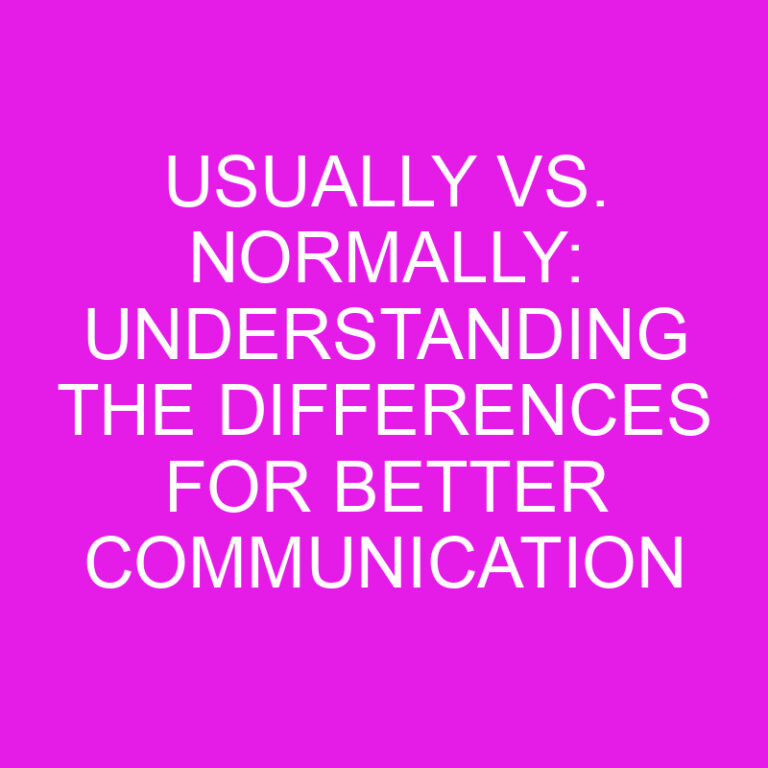
When it comes to the healthcare industry, there are often many roles and titles that can be confusing to differentiate. Two such positions that often get mixed up are the Medical Director and the Chief Medical Officer. While they both play crucial roles in the medical field, there are distinct differences between the two.
Firstly, let’s take a closer look at the Medical Director. This individual is typically responsible for overseeing the medical operations within a specific department or facility. They are often involved in making decisions regarding patient care, ensuring compliance with medical protocols, and managing the overall quality of healthcare services provided. In a nutshell, the Medical Director focuses on the day-to-day operations and clinical aspects of a healthcare facility.
On the other hand, the Chief Medical Officer (CMO) holds a more strategic and executive role within an organization. This position is responsible for developing and implementing the overall medical strategy, ensuring regulatory compliance, and collaborating with other executives to improve patient outcomes and organizational performance. The CMO brings a broader perspective to the table and works closely with the leadership team to align medical initiatives with the organization’s goals.
While both the Medical Director and the Chief Medical Officer play vital roles in the healthcare industry, their responsibilities and focus differ significantly. The Medical Director is more involved in the operational and clinical aspects, while the Chief Medical Officer takes on a more strategic and executive role. Understanding these distinctions can help clarify the roles and expectations of these positions within a healthcare organization.
Post Contents
- Key Takeaways
- Medical Director: Responsibilities and Role
- Chief Medical Officer: Responsibilities and Role
- Key Differences Between Medical Director and Chief Medical Officer
- Importance of Medical Director in Healthcare Organizations
- Importance of Chief Medical Officer in Healthcare Organizations
- Conclusion
- Frequently Asked Questions
Key Takeaways
- The Medical Director is responsible for overseeing the medical operations within a specific department or facility, focusing on day-to-day operations and clinical aspects of healthcare.
- The Chief Medical Officer (CMO) holds a more strategic and executive role, responsible for developing and implementing the overall medical strategy and collaborating with other executives.
- The Medical Director’s responsibilities include managing patient care, ensuring compliance with medical protocols, quality assurance, collaboration, and strategic planning.
- The CMO’s responsibilities include strategic planning, quality improvement, performance management, external relations, leadership, and advancing innovation.
- The Medical Director’s role is primarily operational and clinical, while the CMO’s role is strategic and executive.
- Having a Medical Director ensures clinical expertise, quality improvement, resource management, staff performance management, collaboration, and ethical compliance.
- Having a CMO drives strategic planning, quality improvement, performance management, external relationships, leadership, and innovation in healthcare organizations.
Medical Director: Responsibilities and Role
As a Medical Director, my role is crucial in ensuring the smooth and efficient functioning of medical operations within a specific department or facility. I hold the responsibility of overseeing patient care, making critical decisions regarding treatment plans, and ensuring strict compliance with medical protocols.
- Managing Patient Care: One of my primary responsibilities is to oversee the care provided to patients within my department or facility. This involves reviewing and approving treatment plans, ensuring that they align with established medical standards, and providing guidance to the healthcare team.
- Quality Assurance: I am tasked with ensuring the delivery of high-quality healthcare services. This involves supervising the performance of medical staff, monitoring patient outcomes, and implementing quality improvement initiatives to enhance patient care.
- Compliance and Regulations: Compliance with medical protocols and regulations is of utmost importance. As a Medical Director, I ensure that all healthcare practices within my department or facility are in line with regulatory requirements.
- Collaboration and Communication: Effective collaboration and communication with other healthcare professionals, department heads, and executives are crucial. This facilitates seamless coordination of care, fosters a culture of teamwork, and promotes the highest standards of patient safety and satisfaction.
- Strategic Planning: While my role is primarily operational, I also contribute to strategic planning initiatives. This includes identifying opportunities for improvement, participating in the development of departmental or facility-wide goals, and aligning medical services with the broader organizational objectives.
As a Medical Director, I shoulder the responsibility of overseeing patient care, ensuring compliance with medical protocols, managing quality assurance, and playing an important role in strategic planning initiatives. This position requires strong leadership skills, clinical expertise, and a commitment to providing the best possible healthcare services to patients.
Chief Medical Officer: Responsibilities and Role
As an experienced blogger in the healthcare industry, I would like to discuss the responsibilities and role of a Chief Medical Officer (CMO). CMOs play a vital role in healthcare organizations, and their responsibilities differ from those of a Medical Director. Let’s take a closer look at what it means to be a CMO:
1. Strategic Planning:
One of the primary responsibilities of a Chief Medical Officer is to participate in strategic planning initiatives. They are key players in setting the overall direction and goals of the organization, ensuring that the healthcare services provided align with the organization’s vision and mission. This involves collaborating with executives, department heads, and other key stakeholders to develop strategies that improve patient outcomes and enhance the organization’s reputation.
2. Quality Improvement:
CMOs are responsible for driving quality improvement initiatives within the healthcare organization. They work closely with other healthcare professionals and staff members to monitor patient outcomes and identify areas for improvement. By analyzing data and implementing evidence-based practices, CMOs ensure that the organization delivers high-quality care and meets regulatory standards.
3. Performance Management:
Another crucial aspect of a CMO’s role is managing the performance of medical staff. They provide guidance and support to physicians and other healthcare professionals, ensuring that they are delivering care that meets the organization’s standards. CMOs may develop performance metrics, conduct performance evaluations, and provide education and training to optimize the performance of the medical team.
4. External Relationships:
CMOs also play a crucial role in building and maintaining relationships with external stakeholders. They engage with community organizations, collaborate with other healthcare providers, and represent the organization in various medical committees and industry events. By fostering these relationships, CMOs contribute to the organization’s growth and success.
The role of a Chief Medical Officer is multifaceted and demanding. They engage in strategic planning, drive quality improvement initiatives, manage medical staff performance, and build external relationships. Their leadership and expertise are essential in ensuring that the organization delivers the best possible healthcare services and achieves its goals.
Key Differences Between Medical Director and Chief Medical Officer
When it comes to healthcare leadership roles, the titles “Medical Director” and “Chief Medical Officer” are often used interchangeably. However, there are some distinct differences between these two positions. In this section, I will highlight the key variations between a Medical Director and a Chief Medical Officer.
1. Scope of Responsibilities:
- The Medical Director is primarily responsible for overseeing the medical operations within a specific department or facility. They play a crucial role in managing the day-to-day clinical activities, ensuring compliance with regulations, and coordinating with other healthcare professionals.
- On the other hand, the Chief Medical Officer (CMO) has a broader scope of responsibilities. They are responsible for the overall strategic vision and direction of the organization’s medical services. The CMO collaborates with other senior executives to shape organizational policies, drive quality improvement initiatives, and ensure the delivery of high-quality patient care.
2. Leadership Role:
- As the Medical Director, I contribute to the success of the department by providing clinically-oriented leadership. I guide and support the medical staff, ensuring optimal clinical outcomes, and fostering a collaborative and professional work environment.
- In contrast, as the Chief Medical Officer, I hold a more prominent leadership role in the organization. I am responsible for aligning the medical services with the organization’s strategic goals. I provide visionary leadership, inspire and influence change, and engage with key stakeholders to drive the organization’s growth and success.
3. External Relations:
- While both the Medical Director and Chief Medical Officer interact with external stakeholders, the CMO typically has a more extensive role in building and maintaining external relationships. The CMO represents the organization in medical community events, collaborates with other healthcare organizations and institutions, and plays a pivotal role in shaping partnerships and collaborations.
- The Medical Director is involved in decision-making related to their department or facility, such as staff appointments, resource allocation, and clinical protocols. They focus on ensuring the smooth functioning of their specific area of responsibility.
- In contrast, the Chief Medical Officer is involved in making strategic decisions that impact the entire organization. They contribute to the development of organizational policies, establish guidelines for the delivery of care, and provide insights on emerging healthcare trends and practices.
Importance of Medical Director in Healthcare Organizations
As a Chief Medical Officer (CMO), I understand the significance of the role of a Medical Director in healthcare organizations. The Medical Director plays a crucial role in overseeing and managing the medical operations within a specific department or facility. Their responsibilities are essential for ensuring the delivery of high-quality care and the smooth functioning of the organization.
Here are a few reasons highlighting the importance of a Medical Director in healthcare organizations:
- Clinical Expertise: The Medical Director brings valuable clinical expertise to the organization. With their in-depth knowledge and experience, they provide guidance and support to medical staff, ensuring that the best practices and standards are upheld in patient care.
- Quality Improvement: The Medical Director is responsible for driving quality improvement initiatives within their department or facility. They collaborate with other healthcare professionals to develop and implement protocols and guidelines that enhance patient outcomes and safety.
- Resource Management: A Medical Director is involved in overseeing resource allocation within their department or facility. This includes managing budgets, staffing, and equipment, ensuring optimal utilization of resources to enhance efficiency and effectiveness.
- Staff Performance Management: The Medical Director plays a crucial role in managing the performance of medical staff, including physicians, nurses, and other healthcare professionals. They provide feedback, conduct performance evaluations, and identify opportunities for professional development and growth.
- Collaboration and Communication: The Medical Director acts as a liaison between the medical staff and the organization’s leadership. They facilitate effective communication, promote collaboration, and ensure alignment of medical services with the organization’s strategic goals.
- Ethical and Legal Compliance: The Medical Director ensures that medical practices within their department or facility comply with ethical standards and legal regulations. They oversee adherence to policies and procedures, safeguarding patient confidentiality and rights.
By having a dedicated Medical Director in place, healthcare organizations can benefit from their expertise, leadership, and proactive approach to improving patient care and operational efficiency. This role is critical for maintaining a high standard of medical services and contributing to the overall success of the organization.
Importance of Chief Medical Officer in Healthcare Organizations
As a Chief Medical Officer (CMO), my role is crucial in driving the success and growth of healthcare organizations. My responsibilities go beyond overseeing the medical operations within a specific department or facility. I am responsible for setting the overall strategic vision and direction of the organization’s medical services.
- Strategic Planning: I play a vital role in setting the strategic direction and goals of the organization. By aligning medical services with the overall objectives, I ensure that the organization is moving in the right direction and making informed decisions.
- Quality Improvement: Ensuring high-quality care is at the core of my responsibilities. I work closely with the medical staff to drive quality improvement initiatives, implement evidence-based practices, and enhance patient outcomes.
- Performance Management: Managing the performance of medical staff is crucial for maintaining a high standard of care. I provide guidance, support, and feedback to medical professionals, helping them excel in their roles and contribute to the success of the organization.
- External Relationships: Building and maintaining external relationships is an integral part of my role. I collaborate with stakeholders, such as regulatory bodies, insurance providers, and community partners, to foster partnerships that benefit the organization and the community it serves.
- Leadership Role: As a CMO, I hold a prominent leadership position in the organization. I am involved in making strategic decisions that impact the entire organization, working collaboratively with other executives to drive growth and success.
- Advancing Innovation: I am at the forefront of identifying and implementing innovative solutions in healthcare. From adopting new technologies to exploring alternative care models, I drive innovation to improve patient care and operational efficiency.
By fulfilling these responsibilities and leveraging my expertise, I contribute to the overall success of healthcare organizations. A robust leadership presence in the form of a Chief Medical Officer is essential for driving strategic growth, ensuring high-quality care, and navigating the ever-evolving healthcare landscape.
The role of a Chief Medical Officer is of paramount importance in healthcare organizations. From strategic planning to quality improvement, performance management to external relationships, a CMO’s contributions are critical for the organization’s success. So, having a skilled and experienced CMO in place is essential for any healthcare organization striving for excellence and innovation.
Conclusion
The role of a Chief Medical Officer (CMO) in the healthcare industry is crucial for the success and growth of any organization. The CMO’s responsibilities go beyond just overseeing medical services; they play a prominent leadership role in making strategic decisions that impact the entire organization.
The CMO’s involvement in strategic planning initiatives, quality improvement, and managing the performance of medical staff ensures that the organization is aligned with its objectives and provides high-quality care. Additionally, the CMO’s ability to build external relationships and advance innovation fosters partnerships with stakeholders and drives the organization forward.
Having a skilled and experienced CMO in place is essential for healthcare organizations striving for excellence and innovation. By setting the overall strategic vision and direction of the organization’s medical services, the CMO ensures that the organization remains at the forefront of advancements in the healthcare industry.
The CMO’s role is not only to oversee medical services but also to shape the future of healthcare organizations, driving them towards success and innovation.
Frequently Asked Questions
Q: What are the responsibilities of a Chief Medical Officer (CMO)?
A: The CMO is responsible for strategic planning, quality improvement, managing medical staff performance, building external relationships, advancing innovation, and setting strategic vision and direction.
Q: What is the role of a Chief Medical Officer (CMO)?
A: The CMO holds a leadership role in healthcare organizations and makes critical strategic decisions that impact the entire organization.
Q: What does a Chief Medical Officer (CMO) do?
A: A CMO aligns medical services with organizational objectives, ensures high-quality care, fosters partnerships with stakeholders, and drives the success and growth of healthcare organizations.
Q: Why is it important to have a skilled and experienced CMO?
A: Having a skilled and experienced CMO is crucial for healthcare organizations striving for excellence and innovation. They provide leadership and make strategic decisions that shape the organization’s future.






